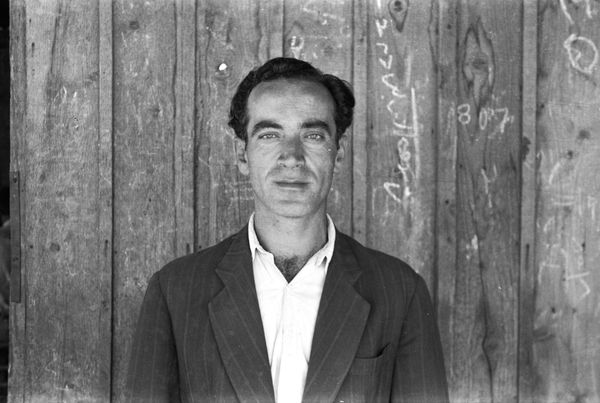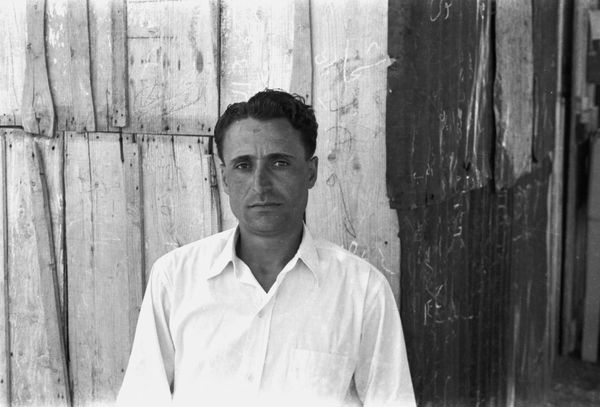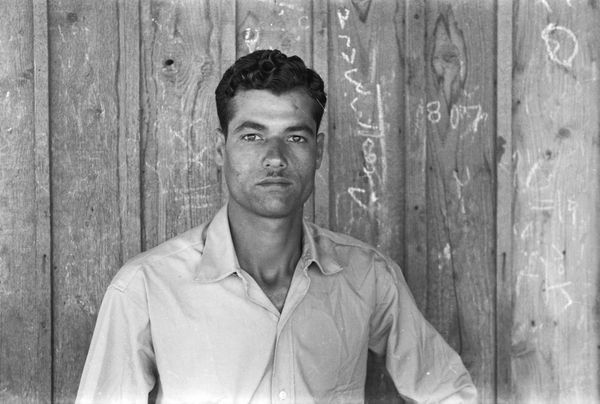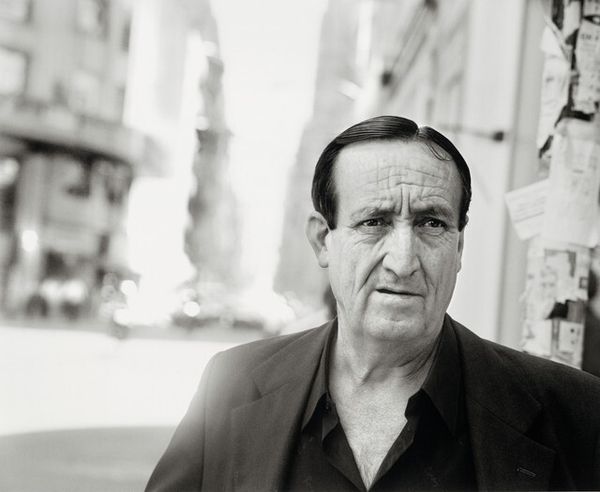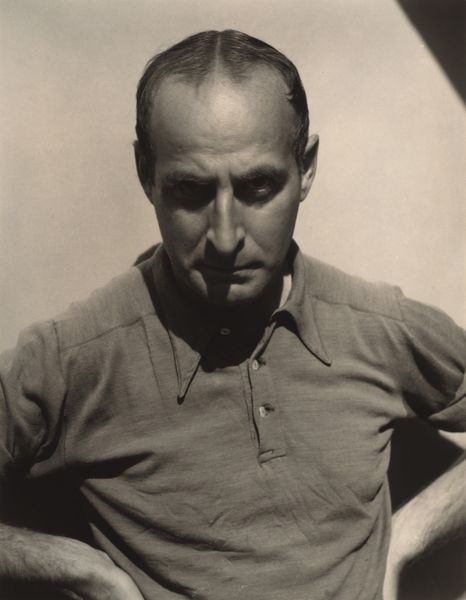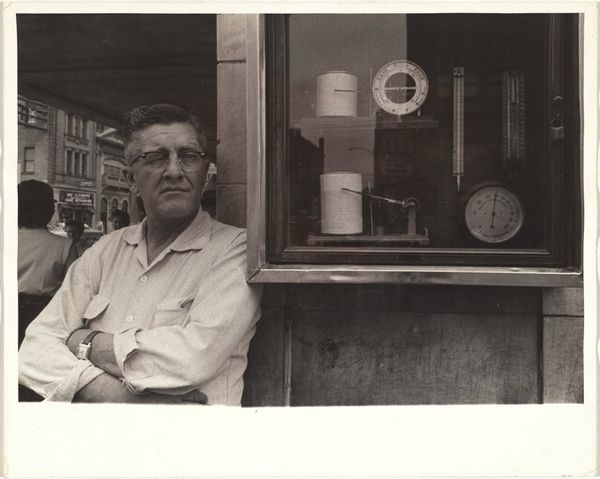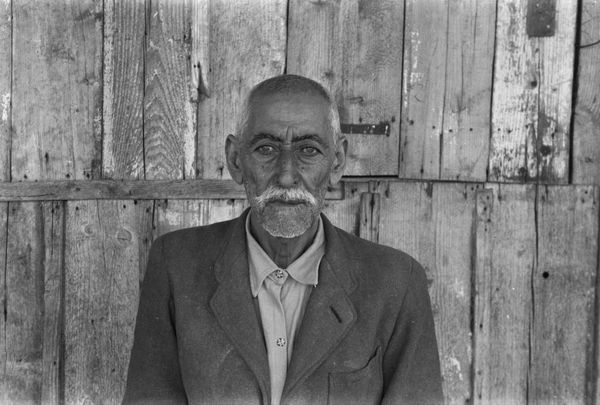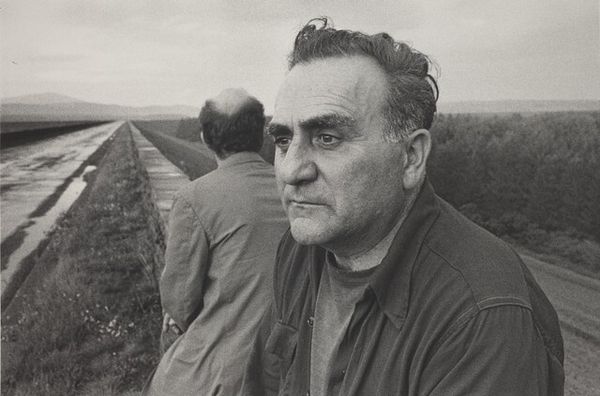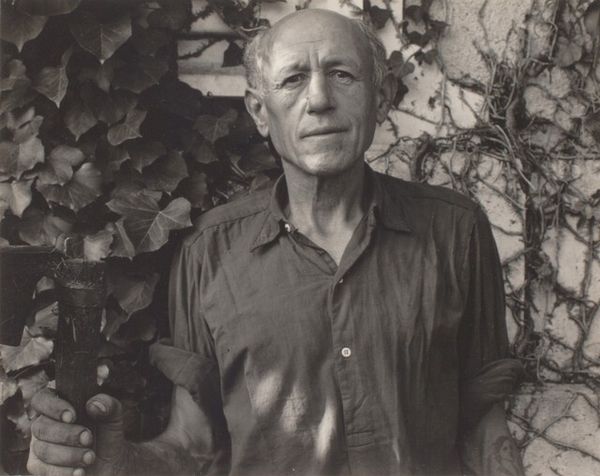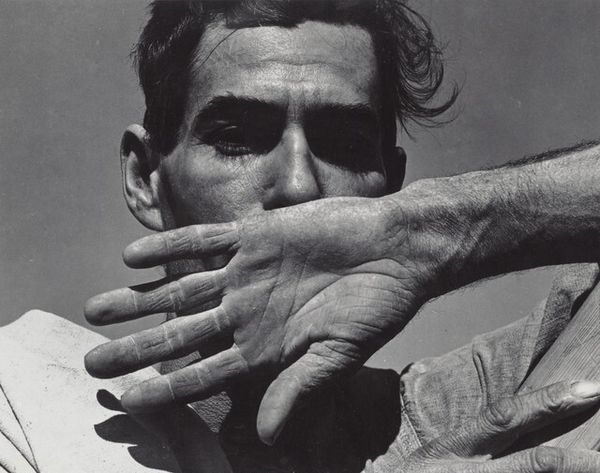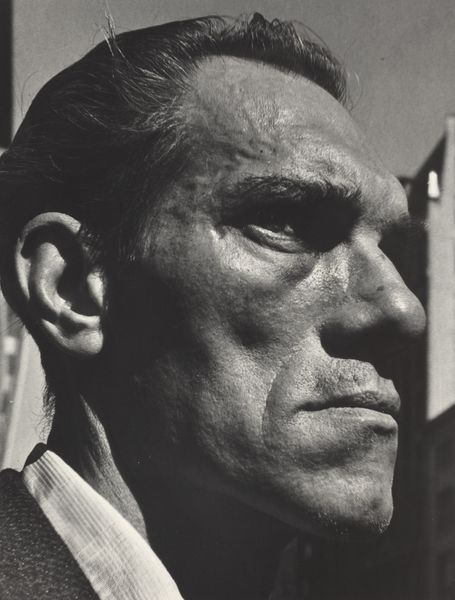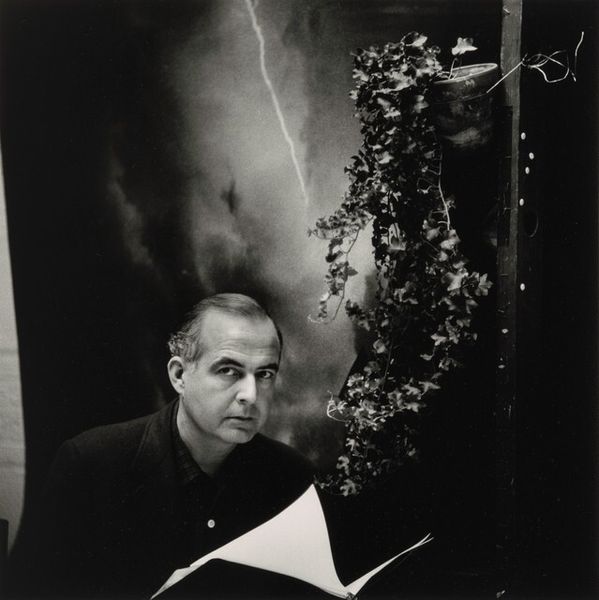
Dimensions: image: 191 x 290 mm
Copyright: © Akram Zaatari, courtesy Hashem el Madani and Arab Image Foundation, Beirut | CC-BY-NC-ND 4.0 DEED, Photo: Tate
Curator: This photograph, simply titled "South Lebanon, 1952", was taken by Hashem el Madani. What strikes you first? Editor: A sense of weathered dignity, wouldn't you say? His gaze is direct, almost challenging, despite the humble setting. Curator: The backdrop is indeed significant. The rough wooden planks and what seems like a draped sheet suggest a makeshift studio, highlighting themes of displacement and resilience in post-colonial Lebanon. Editor: And there's something quite striking about the symmetry here. His centered stance, the light catching his face, it all draws attention to his expression, as though he's embodying the weight of his cultural history. Curator: Exactly. Zaatari’s work often delves into the social and political dimensions of photography itself, questioning ideas around identity and representation. Editor: It's a beautiful and poignant reminder that a single image can carry so much history. Curator: Indeed, a reminder of how art shapes and reflects societal narratives.
Comments
tate 8 months ago
⋮
http://www.tate.org.uk/art/artworks/zaatari-anonymous-south-lebanon-1952-hashem-el-madani-p79439
Join the conversation
Join millions of artists and users on Artera today and experience the ultimate creative platform.
tate 8 months ago
⋮
This work is one of a series of black and white silver gelatin photographs of varying sizes that are collectively titled Objects of study/The archive of studio Shehrazade/Hashem el Madani/Studio Practices. All of the photographs were taken by the Lebanese commercial photographer Hashem el Madani between 1948 and 1982 and compiled into the present group, 117 of which are in Tate’s collection, by the Lebanese artist Akram Zaatari. All of the photographs include people, either alone, in pairs or in small groups, and most were taken in Madani’s studio, although some were shot outside and in his subjects’ homes. The series features men and women and covers a wide age range from babies to elderly people. Almost all of the sitters assume poses deliberately for the camera, sometimes accompanied by props or costumes, and most gaze directly towards the lens. Many of the pictures show subjects interacting in various ways, including embracing, kissing and acting out scenes, such as a mock wrestling match. The photographs are mostly tightly cropped, with the sitter or sitters filling most of the frame, although in some cases the figures are positioned further away from the camera, for instance when shown sitting at a table or standing behind a chair. The photographs tend to have sparse backgrounds, often dominated by a blank posterior wall. They are mounted on white paper, displayed in plain white frames and signed on the back by Madani. Many of them have been organised into categories by Zaatari – such as a group featuring men dressed as Syrian resistance fighters and a collection depicting newly married couples – while the rest are presented individually. Zaatari has stated that although he prefers these groups to be displayed together, this is not a requirement (Akram Zaatari, email to Rachel Taylor, 24 April 2008, Tate Acquisition file).
